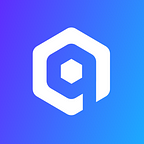Building Native Token On Cardano
Last week, the development department of Cardano updated the platform native token testnet. This will allow users to deploy the mainframe.net to the platform building many utility tokens on the blockchain.
Native tokens will bring the feature of creating your own custom token development on the Cardano blockchain allowing them to carry out transactions on the Cardano blockchain using their own created native token. With the emergence of platform custom native tokens which has resulted in improving transparency, enhancing liquidity and eliminating the need of centralized parties such as banks.
Well, Tokenization is the process of repenting assets (e.g. fait, metals, gold or stocks) in the digital form. The primary reason for tokenization is to trade these crypto assets in the commercial activities. Likewise, Cardano will provide us with a tokenization option.
With new updates “Mary”, infrastructure will not only process native tokens (ADA) as transitions but also the assets with several types. Native support of Cardano blockchain creates ease for developers as there is no need to create smart contracts to handle custom token creation or carrying out transactions with them. In this way, it will help with tracking of ownership and also the transfer of assets.
Future and Utility :-
Developers, businesses and others can create their own custom general purpose( Fungible ) and specialized tokens ( non-fungible tokens) according to their commercial and business needs and objectives. This may include the creation of custom payment tokens or rewards one for the decentralized exchange or stable coins pegged into other cryptocurrencies. These assets can be traded, swapped/exchanged or can be used as the payment for products or services.
Unlike the ERC-20 tokens which are based on Ethereum smart contracts, the tracking and accounting of these assets is supported by ledger ( database that is consensually shared and synchronized across multiple sites, institutions, or geographies, accessible by multiple people ). The reason is that native tokens don’t require the transferring of value meaning that users will be able to receive, send and burn their tokens without paying the transaction fee required for a smart contract.
Working with native tokens on Cardano:-
Depending upon the personal preference and technical expertise's, users will be able to choose from three ways to generate, distribute and exchange tokens.
- Cardano Command Line interface ( CLI ) : The Cardano command line interface (CLI) provides a set of tools for generating keys, constructing transactions, creating certificates, and other vital operations. It’s set up as a hierarchy of subcommands, each with its own built-in documentation on command syntax and choices.
- Token Builder Graphical User interface ( GUI ) : A dedicated token builder with its own graphical user interface which will make it easy for anyone to mint, send and spend native tokens through an easy to use and intuitive user interface.
Before starting to create a new token you will need to look out for:
- The token name
- The token symbol or ticker.
- The token icon
- Total supply or amount of tokens to be created.
- Cardano Wallet address to send new tokens.
3. The Daedalus Wallet :
Daedalus will provide support for sending and receiving tokens in your own wallet. Along with that, it will also allow users to stake their ADA in their wallets and in return get healthy rewards. To allow native token functionality, the Daedalus team is still working on connecting the wallet backend with the user interface. Users will be able to store native tokens in their wallets and send or receive them much like ada.
Native Token Life Cycle:
When going through all the components and deploying each of them, the native token life cycle will be completed. There are 5 phases as discussed below:
- Minting
- Issuing
- Using
- Redeeming
- Burning
During these phases, the ones who control the assets will make a policy regarding how much of the tokens is to be burned or minted. And then token holders ( typically a user or exchange) would be able to send tokens to others or use them for their own purpose. Finally, token holders (such as individual users or exchanges) will be able to send tokens to others, use them as payment, and redeem them once they are no longer needed.
Wrap-Up:
Follow Cardano status updates to make sure that you are on track with their updates and weekly progress as they constantly expand the capabilities of their native token and new developments related to Daedalus wallet.
